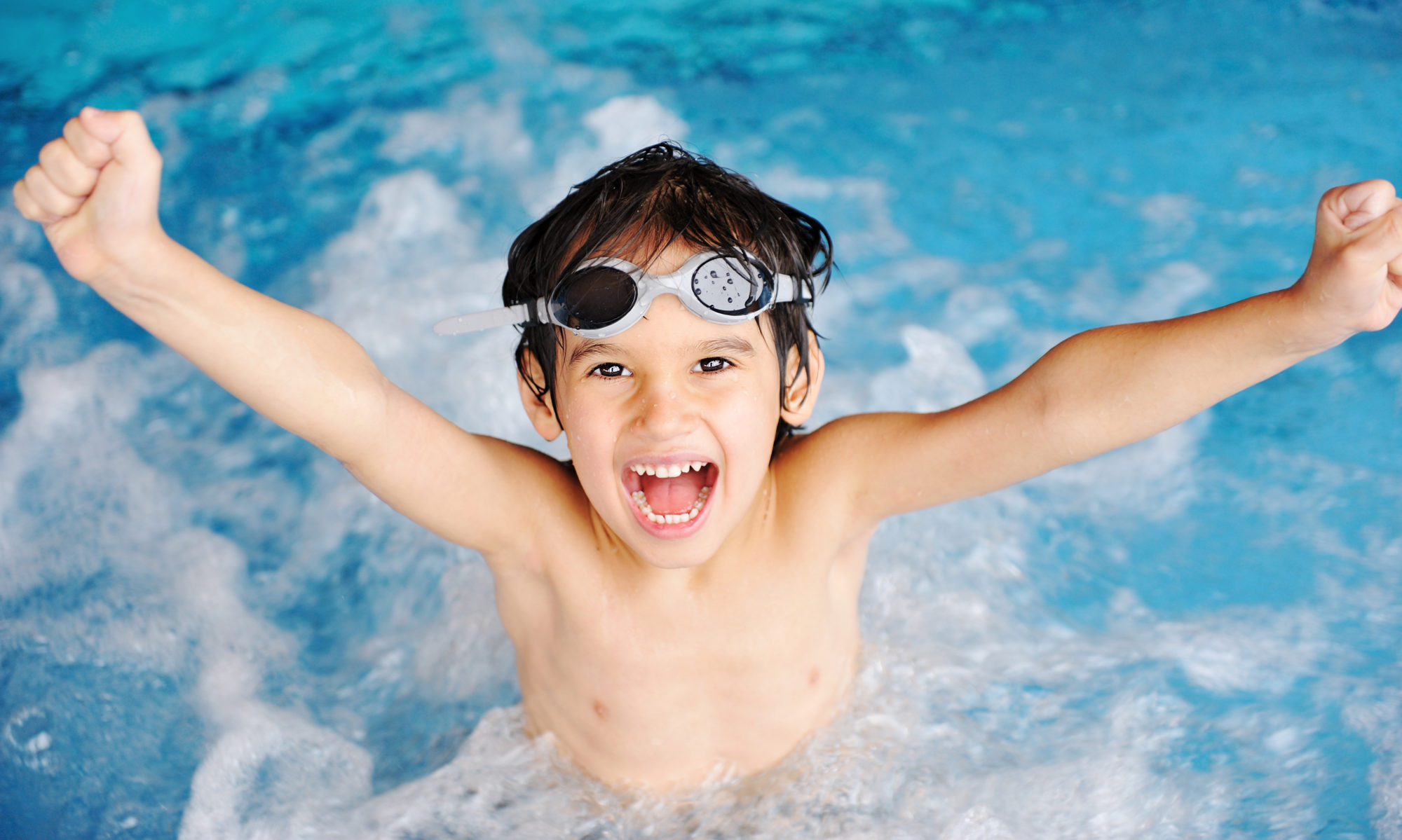If the front crawl is the get-there-quick swimming stroke, the backstroke is the stop-and-smell-the-roses stroke. It’s fun and relaxing, and teaching your kids the backstroke is fun and relaxing, too. Breathing is easy. Because you don’t have to concentrate much on breathing, it’s easy to focus on the rest of the body. Although the body position is the same, the backstroke is actually easier to do than back floating, because the movement helps to keep the body in position.
The First Stage of Teaching the Backstroke
By this point, your child has the advantage of having learned to float on his back, to kick, and to streamline his body position. All of this is the foundation for starting to learn the backstroke. (If you haven’t already taught your kids, these swimming skills, now’s the time! Teaching the backstroke without these foundation skills is pointless.)
Floating on his back has prepared your child to keep his body horizontal and his head in line with the rest of his body. This is the necessary starting point for the backstroke.
Step 1: Nothing But Kick
To start to learn the backstroke, ask your child to put his arms in streamline position while he floats on his back and kicks. Have him practice this for a while to get a feel for moving while he’s on his back. Be sure to track his position in the pool for him and give him plenty of feedback about where he is in relation to the sides or end of the pool. Later he’ll learn to do this himself.
Step 2: One Arm at a Time
Have your child pull one of his arms from streamline position through the water to his thigh. Have him lift his arm to return it to streamline position and then try the same thing with his other arm. Have him practice alternating his arms this way for several lengths of the swimming pool until he feels comfortable with it.
As with the front crawl, have your child visualize reaching for something in the swimming pool just beyond his grasp above his head and to look up. This will help to counteract the tendency to bend at the waist.
Step 3: Put It All Together
At first, your child might have to concentrate so hard on moving his arms that he forgets to keep kicking. Don’t worry about this. After he’s gotten some experience moving his arms, gently remind him to kick. Work on this until your child is comfortable stroking with his arms and kicking continuously. Then, it’s time to move on to the next stage of teaching the backstroke.
